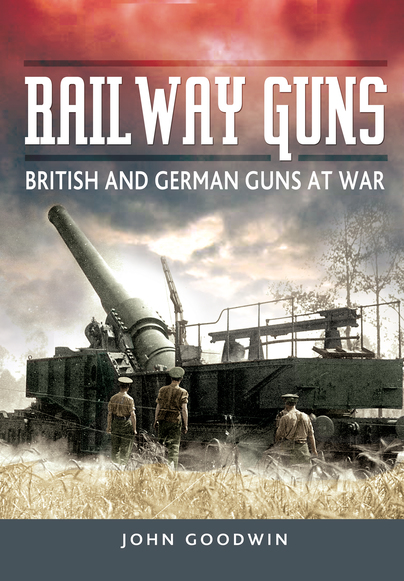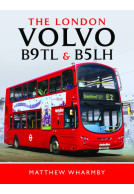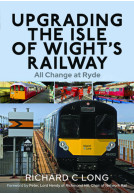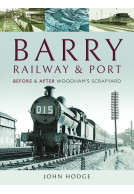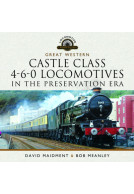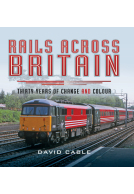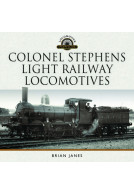Railway Guns (Hardback)
British and German Guns at War
Imprint: Pen & Sword Transport
Pages: 122
Illustrations: 80
ISBN: 9781473854116
Published: 11th January 2017
(click here for international delivery rates)
Order within the next 6 hours, 57 minutes to get your order processed the next working day!
Need a currency converter? Check XE.com for live rates
| Other formats available - Buy the Hardback and get the eBook for free! | Price |
|---|---|
| Railway Guns ePub (38.0 MB) Add to Basket | £8.00 |
In the nineteenth century the War Office showed little interest in developing large heavy artillery for its land forces, preferring instead to equip its warships with the biggest guns. Private initiatives to mount a gun on a railway truck pulled by a steam engine were demonstrated before military chiefs in the Southern Counties, but not taken up. However, the development of longer-range guns, weighing up to 250 tons, to smash through the massive armies and trench systems on the Western Front in 1916, led to a rethink. The only way to move these monsters about quickly in countryside thick with mud was to mount them on specially built railway trucks towed by locomotives.
The railway guns were to be put on little-used country lines where they could fire on beaches, road junctions and harbours. The locations and cooperation given by the independent railway companies is explained, as are the difficulties of using the same lines for war and civilian traffic.
The First World War also saw the emergence of large training camps for railway men. When the war ended most railway guns were dismantled and lost in ordnance depots. The Army Council was uncertain about artillery needs in a future war, so training, and development stopped.
This book largely concentrates on the realities of the time, the type of gun, the locomotives, artillery targets, locations, and what it was like when firing took place. It is fully illustrated with pictures, maps and plans covering different aspects of railway guns their locomotives and equipment.
"A fascinating book which after a brief introduction mentions the First World War before focusing on the 2nd, which is in my view particularly interesting. I have a good friend whose father served on Winnie. A must for anyone interested in the siege weapons of WW2."
Brian Smyth - York Model Engineers Newsletter
This is a fascinating subject and overall, an informative read and very enjoyable too.
Rail Road Modelling
Read the Full Review Here
As featured in
Coastal Defense Journal
A beautifully illustrated book that serves to know this face of the railway in times of war. Railroad enthusiasts and fans of military history will like it as much as they do.
Unes Cuantos Trenes Blog, Jorge del Valle
Read the full Spanish review here
A worthwhile introduction to the study of railway guns which will also find favour with the railway enthusiast.
Fortress Study Group
For me the most valuable aspect of this book is the emphasis on the railway element of the railway gun, which is so often ignored in more weapon focused works.
History of War, John Rickard
Read the complete review here.
Those interested in visiting historical locations may use the maps and illustrations in this work to compare how areas along the rail tracks where the guns sited have changed. Modellers may also find it useful, but sadly there is not much for those interested in weapons.
Gun Mart
Within its subject, this is a useful book.
Railway and Canal Historical Society
As featured in
Shoreham Herald
Photos, drawings, and far-flung narratives provide a source for a specialised area of modelling in which comprehensive references are scarce.
FineScale Modeler magazine, May 2017
A fascinating and educational book that many will benefit from reading.
History Research
An enjoyable book recommended to anyone interested in exploring a short-lived but fascinating by-way of railway history.
Friends of the National Railway Museum
The book is profusely illustrated, 129 black-and-white pictures, photographs and drawings, all of them very interesting and of great quality.
José Manuél Rico Cortés (Mister JM) - Miniaturas JM
An interesting summary about the artillery railway in the nineteenth century supported by an important visual documentation.
Read the full Spanish review here.
This volume may appeal to several potential purchasing groups. These could include Military Historians with an interest in both World Wars I and II or the defences and fortifications used during those conflicts. Students of British Army practices, siege weapons or extra-heavy artillery may also find this book of interest, as could military modellers or wargamers. Railway enthusiasts and modellers with an interest in ‘Things military’ may also find it to be useful for reference purposes.
NZ Crown Mines
The book is heavily illustrated with some excellent archive photos, plus some scale drawings. I found it an interesting book to read, covering the period from WW1 through to the end of WW2...
Military Model Scene, Robin Buckland
For modellers, both military and railway, then I think there is plenty of inspiration in here to spark off a new project or two.
Read the full review here.
The author has provided a lively account of a much
Firetrench
under-covered topic. The railway guns have played an important part in a number of wars. A great read.
Read the full review here.
Although full of interest photographs and details a coherent history and development of railway guns I feel I didn't really gain a greater understanding of this form of artillery.
Richard Latham
Maybe it was aimed at with someone with more prior knowledge and appreciation of such guns. I still don't fully understand the difference between a gun and a howitzer but the seem heavy difficult beasts to move and target. Trying to get to get to grips with trajectory, elevation and rotation.
Found it interesting how railway guns were necessary over certain terrain amid mud impregnated routs and shell-holed roads. However it wasn't clear this weaponry was successful and made achieving objectives.
With the advent of the Second World War it was again an insight to learn how much artillery was lost with the BEF and yet was archaic in nature. That Hitler delayed his invasion and went east instead eventually is obviously not due to gun batteries sited or hidden in tunnels and mobile railway guns.
There are some comments about these guns efficiently and generally it seems they were never really developed with any purpose. The German's seemed more advanced but as an element of this conflict they guns seemed either a throw back to earlier war or cobbled off decommissioned navy guns.
I get the advantage of mobility and the disadvantage of steam giving location away and the weight implications. But this overview lacked for me this critical analysis. Guns were rushed into position to protect the coast and in the main rarely used but so much trouble seems counter productive. Did they advance the war effort, make any difference in the outcome as no deeper evaluation seems to have been made in this book.
It seems to me guns that fire at great ranges are either weapons of terror and indiscriminate destruction or require spotters to direct aim and identify targets.
On the level of trains, locomotives, the development of alternative power like diesel and electrical engines was interesting. I enjoyed the images as already stated but the narrative remains lacking and the photographs themselves can't carry this book.
About John Goodwin
Born into a railway family, the author left school at fourteen. He spent the early years of the Second World War on Sussex Coast, armed with a rifle and awaiting a German invasion. Sent to the Middle East, he ended up in army headquarters in Baghdad and was responsible for secret signal communications, along the military convoy routes from Basra, on the Persian Gulf, to the Russian Army. He is a founder member and contributor to the Fortress Study Group.







